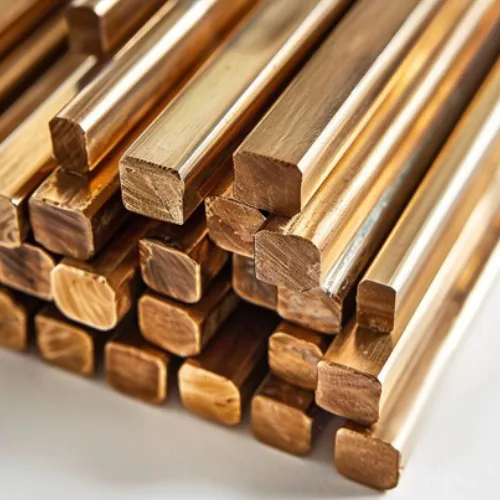To understand the nature of brass, it's important to first grasp some fundamental concepts about metal classification. Metals are generally categorized into two main types: non-ferrous metals and ferrous metals. Brass, a widely used alloy, often sparks discussion regarding its classification. This article will explore the characteristics of brass, reveal whether it is a non-ferrous or ferrous metal, and analyze how this classification affects its applications.

Basic Properties of Brass
Brass is an alloy primarily composed of copper and zinc. The proportion of these components can vary, with copper usually making up between 60% to 90% and zinc comprising 10% to 40%. This alloy typically has a yellow or gold color, which is why it is named "brass." Additionally, small amounts of other metals such as lead, cadmium, or aluminum may be added to improve its mechanical properties and machinability.
Definitions of Non-Ferrous and Ferrous Metals
Before discussing the classification of brass, it's crucial to understand the terms non-ferrous metals and ferrous metals. Non-ferrous metals are metals other than iron, including copper, aluminum, lead, zinc, and nickel. They generally offer good resistance to corrosion and excellent mechanical properties. The processing of non-ferrous metals often requires specialized methods, distinguishing them from ferrous metals.
Ferrous metals mainly refer to metals that contain iron, with steel and iron being the most common examples. Ferrous metals are widely used in industry due to their high strength and lower cost. However, they tend to have poorer corrosion resistance compared to non-ferrous metals, making them less suitable for applications that require high durability.
Classification of Brass
Based on the definitions above, brass is clearly not a ferrous metal, as its primary components are copper and zinc, not iron. Therefore, brass falls under the category of non-ferrous metals. More specifically, brass can be categorized into different types, such as leaded brass or zinc brass, depending on the zinc content and other alloying elements. Each type exhibits distinct physical and chemical properties.
Applications of Brass
Because brass is a non-ferrous metal, it performs excellently in various industrial applications. For example, brass is widely used in manufacturing precision mechanical components, musical instruments, decorative items, and coins. Its excellent machinability makes it ideal for creating complex parts, and its corrosion resistance is beneficial in the chemical and marine industries.
Advantages and Disadvantages of Brass
Brass offers several advantages due to its physical and chemical properties. Firstly, its good corrosion resistance makes it suitable for use in humid or saline environments. Secondly, brass is known for its high strength and good machinability, making it easy to cut, weld, and coat. Additionally, brass has good electrical and thermal conductivity, which is valuable in electrical and heat exchange applications.
However, brass also has some drawbacks. For instance, it can suffer from hot corrosion in high-temperature environments, limiting its use in such conditions. Additionally, brass is generally more expensive than some ferrous metals, which can increase production costs. Therefore, it's essential to consider various factors when choosing materials to ensure the most appropriate metal is selected for a given application.
Conclusion
In summary, brass, as an alloy of copper and zinc, is clearly classified as a non-ferrous metal rather than a ferrous metal. Its wide range of applications spans from mechanical manufacturing to decorative arts. The excellent properties of brass make it outstanding in many demanding environments, though its cost and high-temperature performance need to be considered in practical applications. Understanding the properties and classification of brass helps in making informed decisions in engineering and design tasks.